Chad Flag Meaning
Three vertical stripes of blue, yellow, and red representing Chad's geographic diversity from the waters and sky in the north to the desert and savannas, adopted on the eve of independence from France.
- Continent
- Africa
- Adopted
- 1959
- Ratio
- 2:3
- Colors
- blue, yellow, red
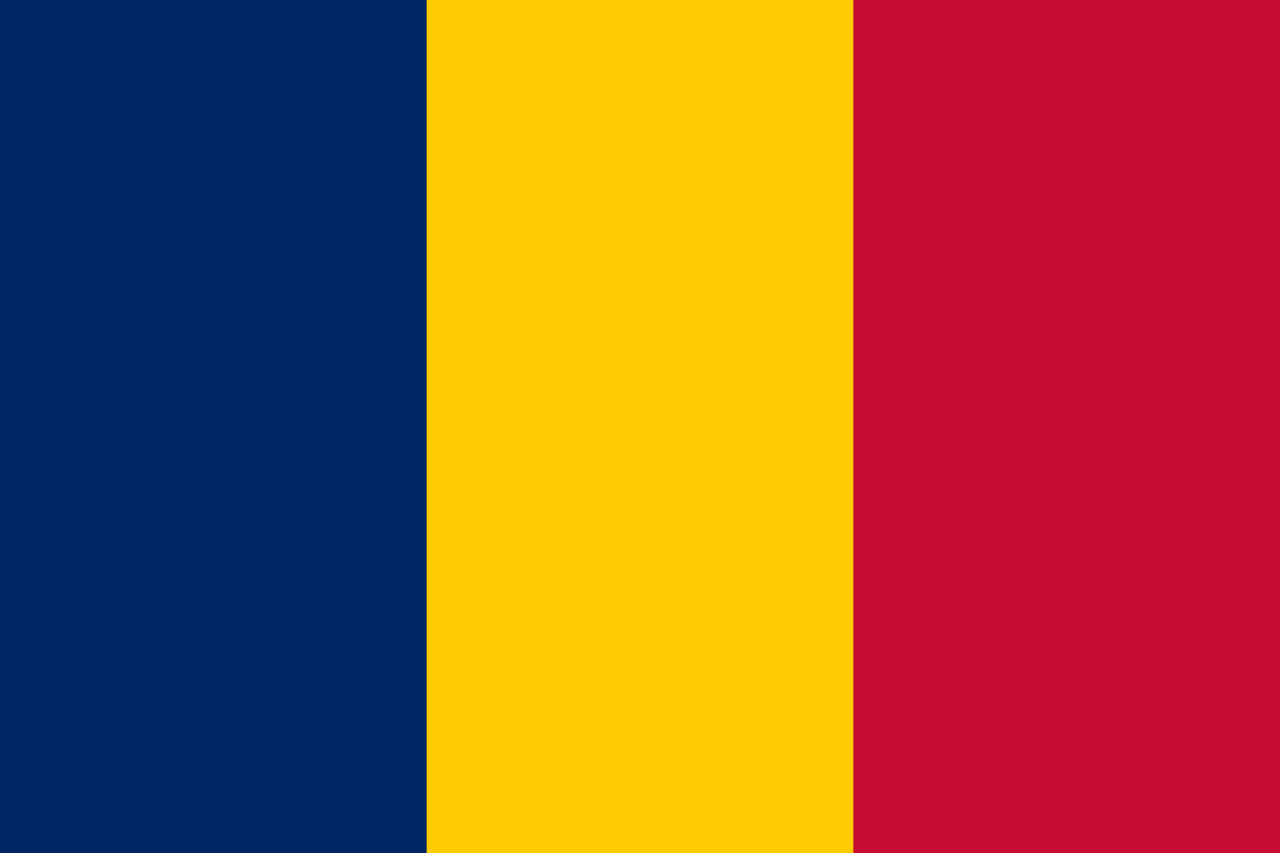
Symbolism
Blue Stripe: Represents the sky above Chad and the waters of Lake Chad, the country's most important water source. Also symbolizes hope for the future and the vast Saharan skies of northern Chad.
Yellow Stripe: Symbolizes the sun that shines over Chad and the golden sands of the Sahara Desert that covers much of the northern part of the country, representing warmth and prosperity.
Red Stripe: Represents the blood shed for independence and progress, as well as the red soil of the southern regions. Also symbolizes sacrifice and the determination of the Chadian people.
Vertical Arrangement: The vertical stripes follow the French tricolor tradition, reflecting Chad's colonial history while the colors themselves represent distinctly Chadian geographic and cultural elements.
Pan-African Colors: The combination of blue, yellow, and red connects Chad to the broader Pan-African movement and represents the country's African identity and solidarity with other African nations.
History
- 1900-1960: Chad was part of French Equatorial Africa, using French colonial flags and symbols while traditional Chadian kingdoms maintained their own local symbols and banners.
- 1958: Chad became an autonomous republic within the French Community, beginning the process toward full independence and the need for national symbols.
- November 6, 1959: The blue, yellow, and red tricolor was officially adopted as Chad's national flag, chosen to represent the country's diverse geography and natural features.
- August 11, 1960: Chad gained full independence from France, and the flag was raised over the new nation, symbolizing sovereignty and the end of colonial rule.
- 1960s: The discovery that Chad's flag was nearly identical to Romania's flag led to diplomatic discussions, but both countries decided to keep their respective designs.
- 1975-1979: During civil war periods, various rebel groups used different flags, but the national tricolor remained the official symbol of the Chadian state.
- 1990-Present: Under President Idriss Déby's rule and subsequent governments, the flag has remained unchanged, serving as a symbol of national unity despite ongoing challenges.
Trivia
- Chad's flag is nearly identical to Romania's flag, an accidental similarity discovered only after both flags were already in use, leading to diplomatic discussions but no changes.
- The flag was adopted one year before independence, making Chad one of the few countries to have its national flag before achieving full sovereignty.
- Lake Chad, represented by the blue stripe, has shrunk dramatically since the flag's adoption, making the symbolism both historically and environmentally significant.
- Chad is one of the few landlocked countries whose flag represents water (Lake Chad), highlighting the importance of this internal water source in the Sahel region.
- The flag's colors coincidentally match those of many other African nations, reinforcing Chad's connection to Pan-African identity despite being chosen for geographic reasons.
- During Chad's various civil conflicts, the national flag has remained constant while political control changed hands multiple times, showing its stability as a national symbol.
- The blue stripe has special significance in the Sahel region, where water scarcity makes any representation of water symbolically powerful for the population.
- Romanian and Chadian diplomats have occasionally met to discuss their identical flags, leading to friendly exchanges and mutual understanding about the coincidence.
- The flag appears on Chadian CFA franc coins and banknotes, along with imagery of wildlife and landmarks that further represent the country's diversity.
- Chad's flag protocol requires respectful display, and it's commonly seen during National Day celebrations on August 11 and other important state occasions.
- The flag represents one of Africa's most culturally diverse countries, with over 100 ethnic groups and languages, making the unifying symbolism particularly important.
- International sporting events sometimes cause confusion between Chad and Romania due to their identical flags, requiring careful attention to ensure proper representation.
- The yellow stripe represents not only the Sahara but also Chad's significant uranium deposits and potential for mineral wealth in the desert regions.
- During the 2019 protests following President Déby's death, the national flag was prominently displayed by both government supporters and opposition groups, showing its unifying power.
- Chad's flag is one of the simplest designs in Africa, with no emblems or complex symbols, reflecting the straightforward representation of the country's geographic diversity.
Related Countries
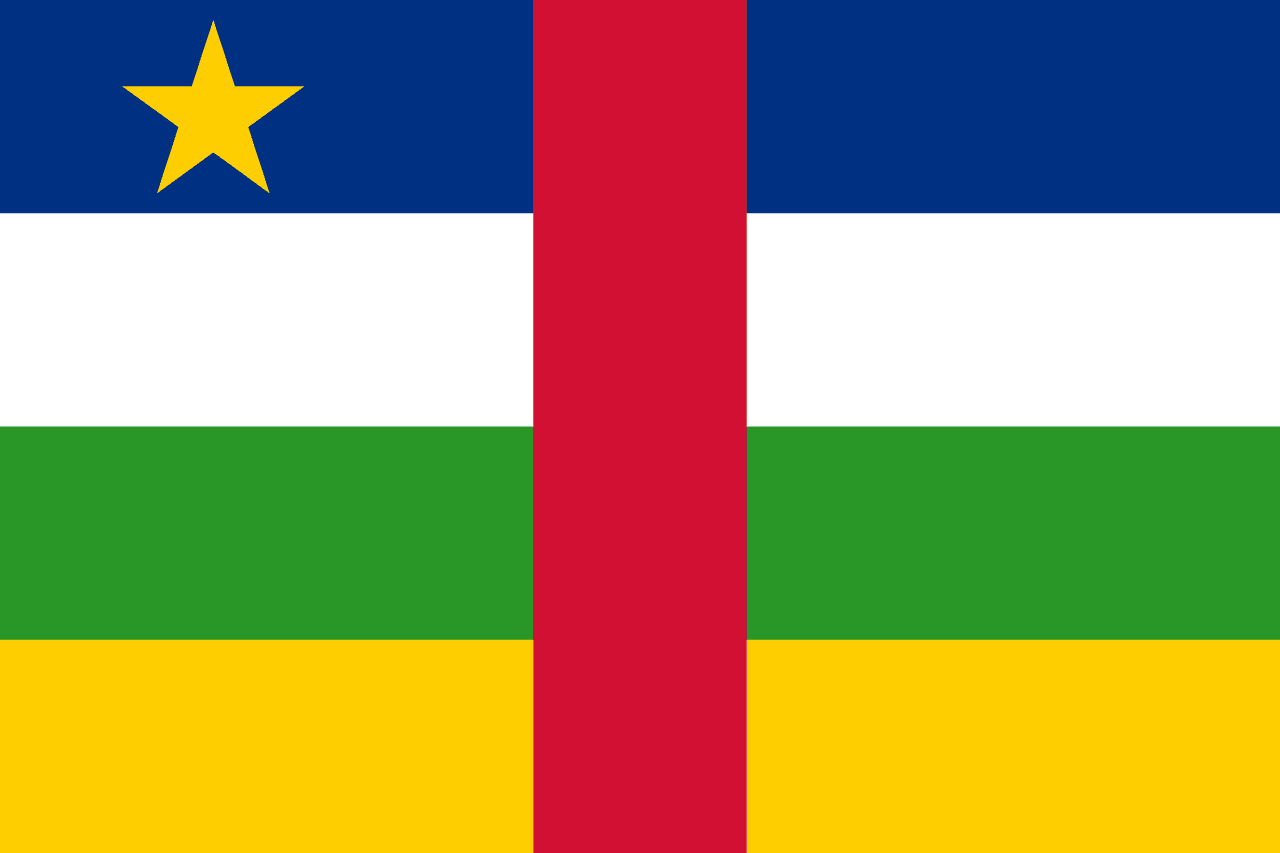
Central African Republic
Africa
Four horizontal stripes of blue, white, green, and yellow with a vertical red stripe through the center and a yellow five-pointed star in the upper hoist, combining Pan-African and French colors to represent unity and independence.
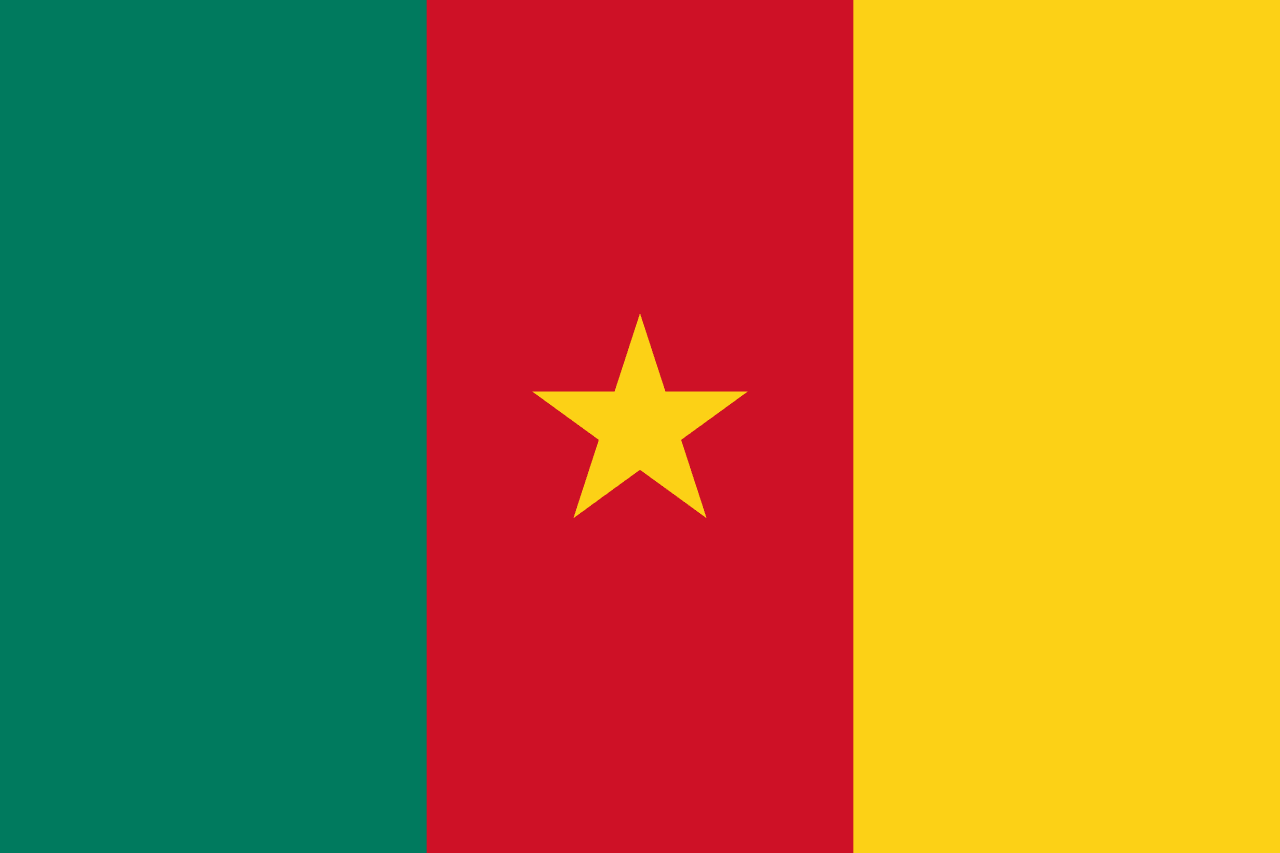
Cameroon
Africa
Three vertical stripes of green, red, and yellow with a yellow five-pointed star in the center of the red stripe, representing the forests, unity, the sun and savanna, and the unity of the diverse peoples of Cameroon.
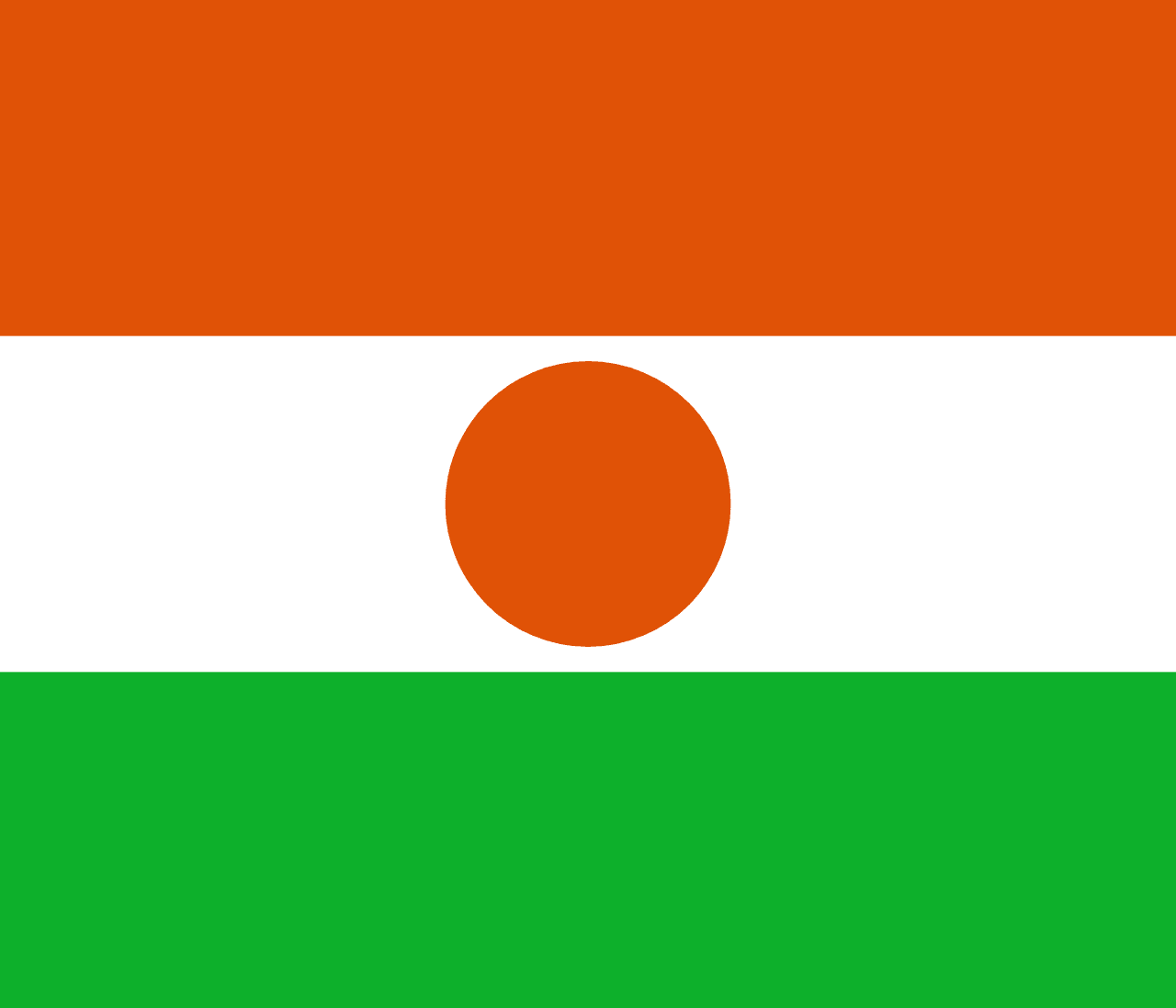
Niger
Africa
Three horizontal stripes of orange, white, and green with an orange circle centered on the white stripe, representing the Sahara Desert, the Niger River, and the fertile south, with the sun symbolizing hope and determination.

Libya
Africa
Three horizontal stripes of red, black, and green with a white crescent and five-pointed star centered on the black stripe, representing Libya's return to its royal heritage after the 2011 revolution and the unity of its three historical regions.
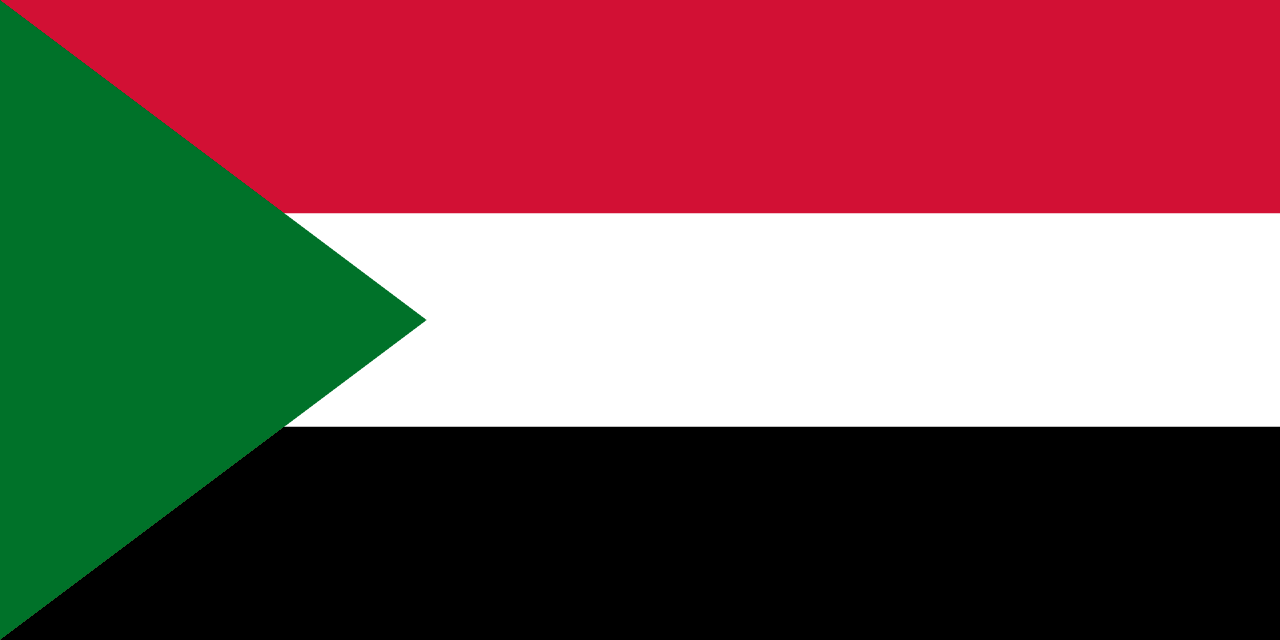
Sudan
Africa
Three horizontal stripes of red, white, and black with a green triangle at the hoist, representing the Pan-Arab colors of the struggle for independence, the blood shed for freedom, peace and light, the battles against oppression, and the prosperity and agriculture of Sudan.
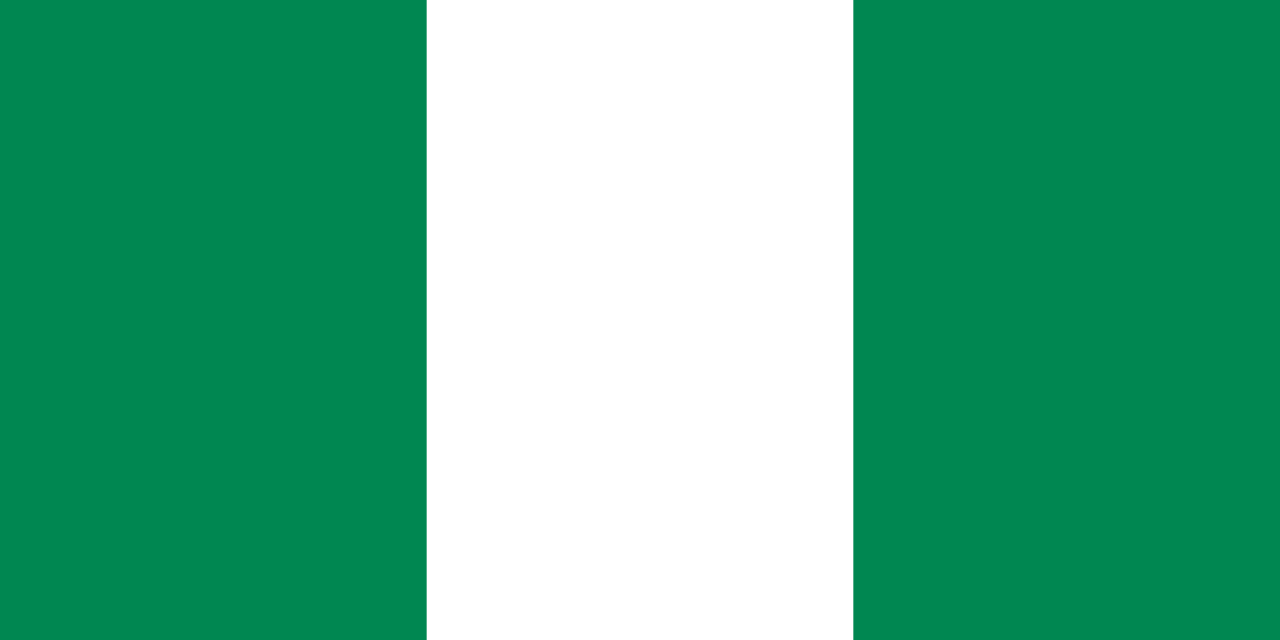
Nigeria
Africa
A vertical tricolor of green, white, and green. The flag was adopted at independence in 1960 and represents agriculture, unity, and peace.